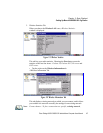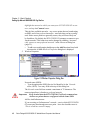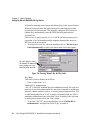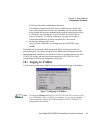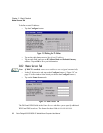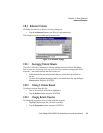
Psion Teklogix 8525 G2/8530 G2 Vehicle-Mount Computer User Manual 19
Chapter 2: Basic Checkout
Setting Up Marvell-88W8300 802.11g Radios
If you are using an Ad Hoc network – a network in which 8525 G2/8530
G2s pass data directly to other 8525 G2/8530 G2s without an access point –
tap on the checkbox next to ‘This is an ad hoc network’ to enable Ad Hoc.
Encryption
WEP (Wired-Equivalent Privacy) encryption prevents others from acciden-
tally accessing your network. If you are not using encryption, you can
choose Disabled from the dropdown encryption menu. Otherwise, leave
this field as is.
Note: WEP cannot be disabled if you are using WPA or WPA-PSK authentication.
TKIP (Temporal Key Integrity Protocol) is an encryption protocol included
as part of the IEEE 802.11 standard for wireless LANs. Designed to
enhance WEP, TKIP uses the original WEP programming but ‘wraps’ addi-
tional code at the beginning and end to encapsulate and modify it, encrypt-
ing each data packet with a unique encryption key.
Authentication
802.11 supports a number of subtypes of network authentication services:
Open, Shared, WPA and WPA-PSK.
Using Open authentication, any wireless station can request authentication.
The station that needs to authenticate with another wireless station sends an
authentication management frame that contains the identity of the sending
station. The receiving station then sends back a frame that indicates whether
it recognizes the identity of the sending station.
Using Shared authentication, each wireless station is assumed to have
received a secret shared key over a secure channel that is independent from
the 802.11 wireless network communications channel.
WPA (Wi-Fi Protected Access) uses the Temporal Key Integrity Protocol
(TKIP) to provide strong data encryption, and offers two user authentica-
tion and key management methods.
The first method of user authentication is intended for environments using a
centralized Authentication Server, such as RADIUS. User authentication is
based on IEEE 802.1X and mutual authentication based EAP.
In environments where a centralized Authentication Server or EAP frame-
work is not available, user authentication is based on a ‘Pre-Shared Key’
method – WPA-PSK. If you are using Pre-Shared Key authentication, you









